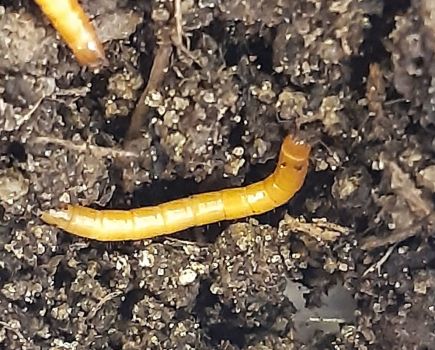Beating back sugar beet weeds can be a tricky task, with growers often juggling jobs and finding clashes in spray timings but planning a tailored programme can help ease the burden. CPM finds out more.
Broadacre works really well if you’ve used a pre-emergence in the programme, or if you have the ‘correct weeds’.
By Melanie Jenkins
Although the loss of desmedipham may still be felt among growers, the future isn’t entirely clear for phenmedipham. But the positive news is the UPL and Bayer task force (for phenmedipham) has met the renewal application deadline set by the Chemicals Regulation Division, explains Pam Chambers of UPL at the BBRO BeetTech22 in February.
“It’ll take a little while before we hear any more and it’s probably not going to be until around 2024 before we have a decision, but it’s looking quite favourable at the moment.”
So what’s the situation for growers right now? According to Pam, it’s a case of planning herbicide programmes, protecting the programme through management and getting it to perform, both in the field and in terms of cost.
Using programme trials, she’s looked at two and three spray programmes, the broadacre approach, conventional programmes, high versus low cost and straights against formulated mixes. “We can generate a lot of data from these trials,” she says.
Looking at the current effectiveness of phenmedipham, data taken from weed screens in 2018, 2019 and 2021 demonstrated its control of orache isn’t that strong, explains Pam. Instead she suggests growers look at metamitron as the preferred active when the weed is present.
However, she highlights that in 2018, when conditions were really hot at spraying, phenmedipham gave good control of orache, at 83%. “But in 2019, the temperatures dropped during the second spray timing and that impacted how well phenmedipham worked.”
She also points out that desmedipham was still in use in 2018, and when this was added to the tank-mix it increased the level of control of both actives. “Obviously we don’t have it anymore and that’s why it’s important to get the best out of phenmedipham. Temperatures and relative humidity all make a big difference to its performance,” says Pam.
She also compared three applications of quinmerac and dimethenamid-p against untreated situations and found these didn’t provide a good control of weeds on the trials site. But what is being controlled is the cleavers, she explains.
“It’s very strong on those but when we added phenmedipham and ethofumesate, the level of control was boosted considerably.”
Dimethenamid-p is the go-to active for controlling cranesbill, which has become an increasing problem, and the combination of quinmerac and dimethenamid-p is a useful post-emergence option when used in tank-mix with other actives, says Pam. “So how the different combination of actives work is really important.”
So what about formulated mixes? In many cases formulated products can be the simplest means of weed control, offering growers benefits in terms of easier spraying, less time spent mixing and fewer containers to store, move, wash out and dispose of, she explains.
“But with straights you’ve got the flexibility to adjust the rate and manage the amount of active that’s applied. Using ethofumesate as a straight also allows pre- and post-em use, which isn’t possible if phenmedipham is included as part of a formulated mix”
However, for all the advantages that formulated mixes offer there are considerations at application that, if observed, will help growers get the most out of these products, explains Antonia Walker, Bayer campaign manager for root crops.
“Even without desmedipham, we still have some excellent products available for reliable and effective weed control, but there’s no overlooking the importance of application timing and the use an adjuvant oil post-em where appropriate,” she says.
In trials, Betanal Tandem (phenmedipham+ ethofumesate) plus oil has given 90-100% control of a range of common weeds, but there are some species where the inclusion of Goltix 70SC (metamitron) has delivered enhanced control, she adds.
“We see excellent control of most broadleaf weeds, including fat-hen, from a standard mix of Betanal Tandem plus oil. But where annual meadow grass, knotgrass, redshank, ivy-leaved speedwell, pale persicaria or mayweed are expected to present a challenge, the inclusion of Goltix will take the level of control from good to outstanding,” claims Antonia.
“It should be reassuring to see that where sprays are timed appropriately and with the right tank-mix partner, it’s still possible to achieve near complete control from a three-spray programme built around Betanal Tandem,” she adds.
Across all species, the inclusion of an oil adds roughly 8% to the performance of Betanal Tandem, according to Bayer, but growers are advised to consult the BBRO guidance on rates to avoid crop damage, says Antonia.
“Growers understand the importance of not applying herbicides during periods of high heat, but it’s advisable to also consider the daytime high when determining the rate an oil can be safely included. This is on a sliding scale from 14-21˚C, above which it should be avoided altogether,” she says.
In situations where harder to treat weeds are present, or where weeds have grown on past two true leaves, the inclusion of an additional partner such as Debut (triflusulfuron-methyl), Dow Shield (clopyralid), Venzar (lenacil) or Safari Lite (lenacil+ trifulsulfuron-methyl) can be added to the tank for improved control, she suggests.
According to FMC, broadacre weed control methods are increasingly replacing the little and often phenmedipham/active/residual (FAR) approach and the company claims it means sugar beet weeds can be kept in check during the early part of season, despite the loss of desmedipham.
“Just four tall weeds/m2 can reduce beet yields by 1t/ha,” says Georgia Antoniou, FMC commercial technical manager.
FMC’s broadacre system is based around a foundation of two applications of Safari Lite. “Robust, larger mixes used in this technique perform better on bigger weeds, while fewer passes save time during a busy period, as do fewer tank cleanings, particularly if sulfonylurea products such as Debut or Safari Lite are used,” explains Agrovista’s Becky Finbow.
“This helps ensure good application timing, with a knock-on bonus for timeliness of insecticides for virus yellows, or Centurion Max (clethodim) for blackgrass.”
In a DeSangosse and UPL trial, carried out by Silsoe Spray Applications Unit (SSAU), the impact of phenmedipham, different nozzles, water volume and the inclusion of an adjuvant on Chenopodium species, including fat-hen and fig-leaved goosefoot was explored. Using a tracer in the herbicide mixes, researchers were able to determine the effective coverage of different application techniques.
When 100 l/ha was applied with a flat fan, this provided 49.9% coverage, but when the water volume was increased to 200 l/ha, this fell slightly to 46.6%. “We then added an adjuvant, which boosted the level of coverage to 60.8%,” says Pam.
“The interesting thing is that when we used a drift reduction nozzle at 100 l/ha, 200 l/ha and even with an adjuvant added in, we got a lot less coverage of those weeds,” she explains. In the 100l/ha trial, coverage was only 24.7%. Adding an adjuvant increased this to 34.9%. But even in the 200 l/ha, coverage only increased to 34.1%, and with an adjuvant added, it rose to 47.6%.
“I don’t think this is revolutionary, as there’s been a lot of work done on application technique in the past, but it’s a useful reminder,” says Pam.
But one of the major factors for growers is costing. According to Pam, broadacre weed control works really well, and in trials came in costing £96/ha, with only two sprays. “But a word of caution,” she says. “There was no mayweed or knotgrass present in the trial and if those weeds were there, I’d have thought twice about using broadacre. By the time you start the programme (crop at least first true leaves, 1cm), the mayweed and knotgrass will be getting a little too big and you could struggle to keep on top of them.
“Broadacre works really well if you’ve used a pre-em in the programme, or if you have the ‘correct weeds’,” she explains.
An application of phenmedipham, ethofumesate and metamitron as straights came in costing £116/ha but Pam says this could’ve been done cheaper. “I set the protocols at the beginning of the season before we started spraying. If I’d been doing the actual agronomy there, walking the field every five to seven days, I’d have probably been able to get that down to under £100/ha,” she explains. “However, it would’ve taken a lot of my time and work and sometimes that’s not a luxury you have. So do take that into account.”
The highest costing application came in at £176/ha, and included phenmedipham, ethofumesate, metamitron, trisulfuron-methyl and lenacil, but Pam warns not to dismiss this mix. “In some cases it might be an option that you need to consider. If you can’t get around to walk or monitor your fields on a regular basis, you want to have a good catch-all spray that’ll be very effective. And looking at the number of actives in that mix, it basically has everything,” she says.
Though it wasn’t part of the trial, Pam has factored in the cost of using Conviso seed compared with conventional, and then added in the cost of Conviso One (foramsulfuron+ thiencarbazone-methyl), as it’s sold as a package. “It comes to about £260/ha with Conviso, but if you’ve got weed beet there’s absolutely no reason you shouldn’t be using Conviso – it should be your first choice.”
Pam suggests growers look at their approach to weed control, considering things such as monitoring frequency, time allowance and whether a pre-em herbicide will be used or not. “If you’re getting the best out of the actives that you’re using, hopefully you’ll get weed-free sugar beet and the best margin over treatment costs.”




